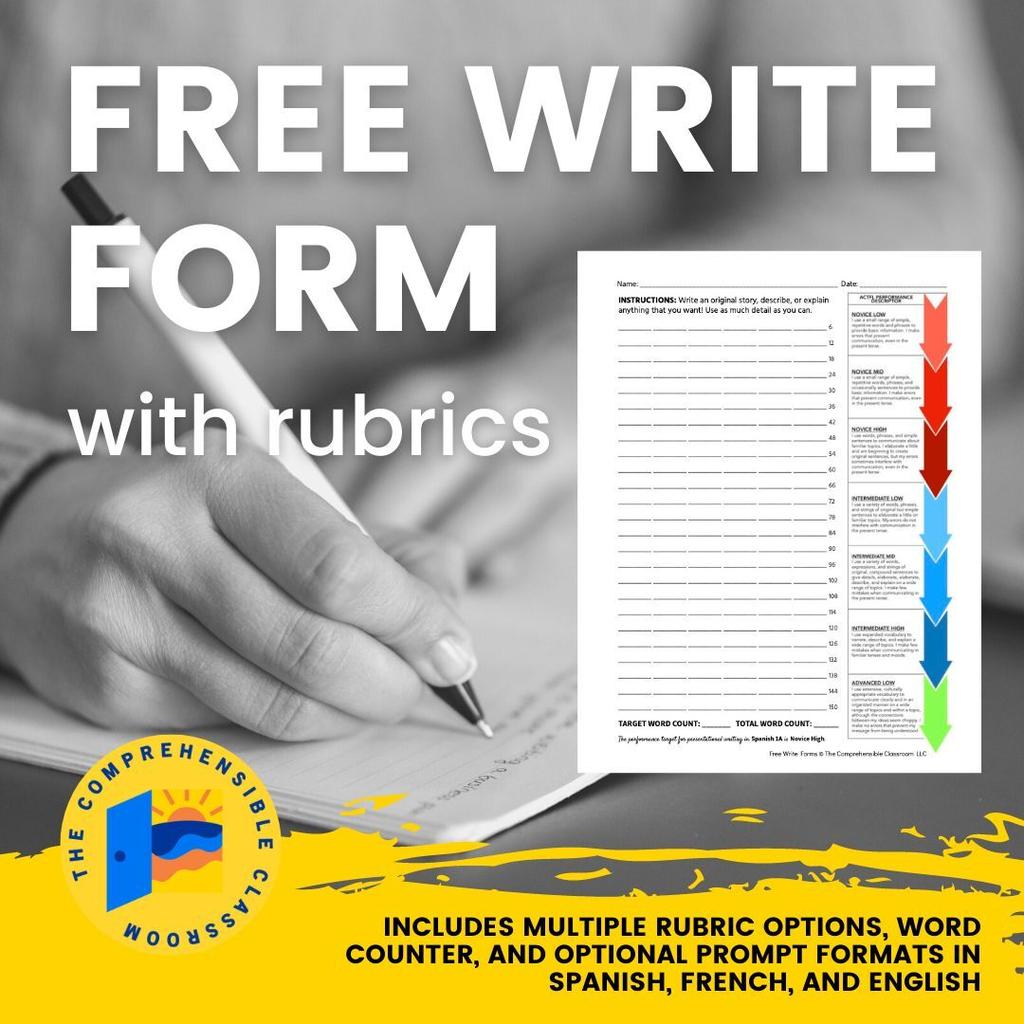When I began using TPRS® (Teaching Proficiency through Reading and Storytelling), one of the first routines that I implemented was weekly timed free writes.
What is a free write?
A free write, also known as a timed write or a fluency write, is a tool that teachers can use to get a window into what their students can do with a language that they are learning. The teacher gives students a time limit (try 5, 7, or 10 minutes) and tells students to write as much as they can, about anything they want, in that time limit. The students' goal is to see how much they can write!
At the end of the time limit, the teacher tells students to stop writing and has them count up the number of words that they wrote.
How to evaluate free writes
After using timed free writes for some period of time, I learned a little more about their history and purpose. This 2015 blog post by Judith DuBois offers a comprehensive background on Fluency Writing, and I strongly recommend reading it as you make a plan for using free writes in your own classes.
Track free write word count
There are several different ways to evaluate free writes. The first option is treat them as a formative assessment and not evaluate the language that students produce. Instead, have students track and graph the number of words that they write in each timed write throughout the year so that they can see their own growth. By not attaching a grade to the assignment, students are less inhibited and will be able to truly focus on communicating their message without engaging their monitor and editing their work, trying to make it perfect.

Use free writes as a summative assessment
Free writes can also be used as summative writing assessments, but keep in mind that categorizing them as such may lead students to write less and with more caution. Consequently, they won't provide as clear a window into the language that your students have acquired. That being said, I do use timed free writes in my classes as summative assessments. I embed a rubric on the free write forms that allows me to evaluate students' presentational writing performance holistically, without attending to specific errors. You can download the forms that I use here. Although the form says "Free Write" at the top, I use the rubric to assess all student writing, whether it is focused or free (more on that later).
Evaluate free writes with six traits writing rubrics
I created my free write form with rubric yesterday after a great conversation in our Electives team meeting about curriculum alignment and collaboration in our building. The Language Arts Department instructs and assesses student work based on the Six Traits Writing model, and next year all students will be given a universal writing screener that all faculty will be expected to grade together. I embedded this rubric in my free write form so that I can better support core classes and reinforce writing strategies that students are using in those classes.
Evaluate free writes with performance rubrics
Update: 5/14/2013 Last school year, I stopped using the Six Traits Writing rubrics and switched over to performance rubrics that are based on ACTFL Proficiency Guidelines (click here). Download my new form here. (It includes the old form and new forms with rubrics for Spanish A, B, and 2A.)
DON'T correct errors in free writes
If you do choose to treat timed writes as summative assessments, I implore you to not correct errors. Providing feedback to students in the form of error correction does not lead them to not make those same mistakes in the future. What error correction DOES do is makes students anxious about writing. Anxious students write less and acquire less. If you choose to evaluate students' writing, please consider using a holistic tool such as a rubric.

Focused write or free write?
Many students struggle to come up with an idea for what to write about in their timed free writes. You don't want students to spend 7 minutes trying to come up with an idea and only 3 minutes writing! Instead, what I will often do is to give students several ideas for things that they can choose to write about if they need an idea. I'll choose things that I know they can write about, such as, "Tell me a story about a person that walks to McDonalds and sees someone else", or "Tell me about where you went last weekend". If students need an idea, they can use mine–or they can write about whatever other topic they want!




